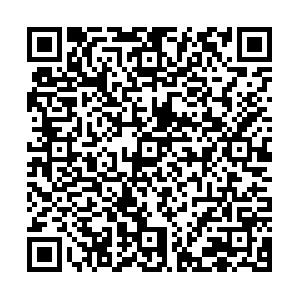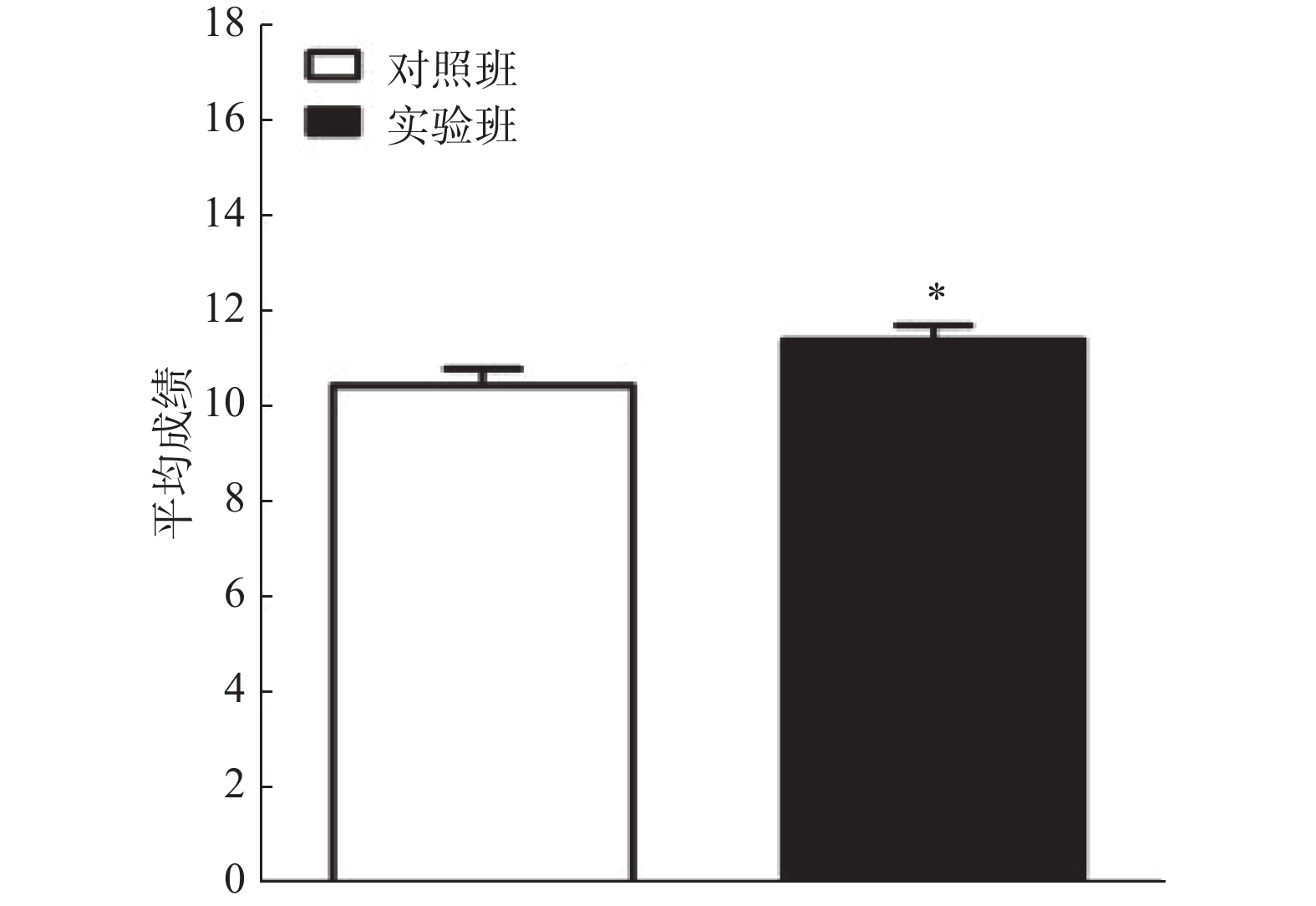Application of Personality Color Analysis in PBL of Organ-System Integration Course
-
摘要:
目的 探索“性格色彩分析”对提高器官系统整合课程PBL教学效果的作用。 方法 选取昆明医科大学2017级临床医学专业创新班50名学生为对照班,按照学生学号顺序进行分组;选取2019级临床医学专业创新班58名学生为实验班,该班学生根据性格色彩分析理论进行分组。分别比较实验班和对照班考试成绩、成绩分布以及组间差异。 结果 实验班考试成绩提高,与对照班比较差异有统计学意义(P < 0.05);实验班 < 9分人数比例(10%)较对照班(18%)下降,实验班13~15分人数比例(40%)较对照班(14%)明显提高;实验班组间比较无显著性差异,但对照班组间比较差异有统计学意义。 结论 将“性格色彩分析”理论应用到器官系统整合课程PBL教学中,能够减少组间差距,提高教学效果,值得进一步推广应用。 Abstract:Objective To discover the role of “personality color analysis” in improving PBL teaching efficiency of Integration course. Methods Fifty students from 2017 innovative class of Kunming Medical University were selected as the control class, the students were grouped according to their student numbers.58 students from 2019 innovative class of were selected as the experimental class, and the students were grouped according to the “personality color analysis” theory. The scores, grades and differences between groups were compared. Results There was a significant difference (P < 0.05) in the scores of the two classes, and comparing the grade distribution of the two classes, the proportion of students in the experimental class (10%) with < 9 points were lower than that in the control class (18%), and the proportion of students in the experimental class (40%) with 13-15 points was higher than that in the control class (14%). Furthermore, there was no difference between groups in the experimental class, but there was a significant difference between groups in the control class. Conclusion Applying the theory of “personality color analysis” to the PBL of organ-system integration course reduces the gap between groups and improve the learning efficiency, which deserves further application and popularization in PBL. -
Key words:
- PBL /
- Personality color /
- Organ-system integration course
-
表 1 乐嘉性格色彩测试计算方法
Table 1. Personality analysis test from the test maker
前1~15题合计数 后16~30题合计数 性格色彩总数 A的总数 A的总数 红色:前A+后D B的总数 B的总数 蓝色:前B+后C C的总数 C的总数 黄色:前C+后B D的总数 D的总数 绿色:前D+后A 表 2 实验班考试成绩组间比较
Table 2. Comparison of test scores between groups in experimental class
Tukey’s 多重比较检验 q值 显著性差异 95% CI 1组 vs 2组 0.14 ns −2.22~2.39 1组 vs 3组 0.14 ns −2.22~2.39 1组 vs 4组 1.17 ns −3.05~1.67 1组 vs 5组 0.99 ns −1.77~2.94 2组 vs 3组 0.00 ns −2.30~ 2.30 2组 vs 4组 1.31 ns −3.19~1.58 2组 vs 5组 0.85 ns −1.86~2.86 3组 vs 4组 1.31 ns −3.13~1.58 3组 vs 5组 0.85 ns −1.86~2.86 4组 vs 5组 2.12 ns −1.13~3.68 表 3 对照班考试成绩组间比较
Table 3. Comparison of test scores between groups in experimental class
Tukey’s 多重比较检验 q值 显著性差异 95% CI 1组 vs 2组 0.00 ns −2.67~2.67 1组 vs 3组 4.13 * 0.07~5.56 1组 vs 4组 4.07 * 0.03~5.37 1组 vs 5组 1.81 ns −1.47~3.87 2组 vs 3组 4.13 * 0.07~5.56 2组 vs 4组 4.07 * 0.03~5.37 2组 vs 5组 1.81 ns −1.47~3.87 3组 vs 4组 0.16 ns −2.86~2.63 3组 vs 5组 2.36 ns −4.36~1.13 4组 vs 5组 2.26 ns −4.17~1.17 -
[1] McMillan M A,Dwyer J. Changing times,changing paradigm (2):The Macarthur experience[J]. Nurse Educ Today,1989,9(2):93-99. doi: 10.1016/0260-6917(89)90059-2 [2] Prosser M,Sze D. Problem-based learning:student learning experiences and outcomes[J]. Clin Linguist Phon,2014,28(1-2):131-142. doi: 10.3109/02699206.2013.820351 [3] 徐慧颖,汤勇,孙聪. PBL整合课程在医学生临床思维能力培养中的作用[J]. 科教导刊,2022,14(11):39-41. [4] 明海霞,陈彦文,武燕,等. 基于“以器官系统为中心”的基础医学整合课程开展PBL的思考[J]. 医学理论与实践,2021,34(4):714-716. doi: 10.19381/j.issn.1001-7585.2021.04.088 [5] 乐嘉. FPA 性格色彩入门[M]. 长沙: 湖南文艺出版社, 2012: 16-310. [6] 曾尹亮,沈翠珍,周建平,等. “四色人格”理论在护理PBL 教学中的应用与价值探讨[J]. 中国高等医学教育,2021,35(8):99-100. doi: 10.3969/j.issn.1002-1701.2021.08.049 [7] 赵文辉. 性格色彩分析对护理实习教学中PBL教学效果的影响[J]. 深圳中西医结合杂志,2017,27(8):159-160. doi: 10.16458/j.cnki.1007-0893.2017.08.081 [8] 张海民,鄢阳,王光春,等. 性格色彩分析对泌尿外科见习带教中PBL教学效果的影响研究[J]. 中国高等医学教育,2016,30(1):85-86. doi: 10.3969/j.issn.1002-1701.2016.01.043 [9] Carrero E,Gomar C,Penzo W,et al. Comparison between lecture-based approach and case/problem-based learning discussion for teaching pre-anaesthetic assessment[J]. Eur J Anaesthesiol,2007,24(12):1008-1015. doi: 10.1017/S0265021506002304 [10] 陈丽如. 探讨性格色彩理论对护理实习教学中PBL教学效果的积极作用[J]. 智慧健康,2020,6(15):19-20. doi: 10.19335/j.cnki.2096-1219.2020.15.010 -






 下载:
下载:



